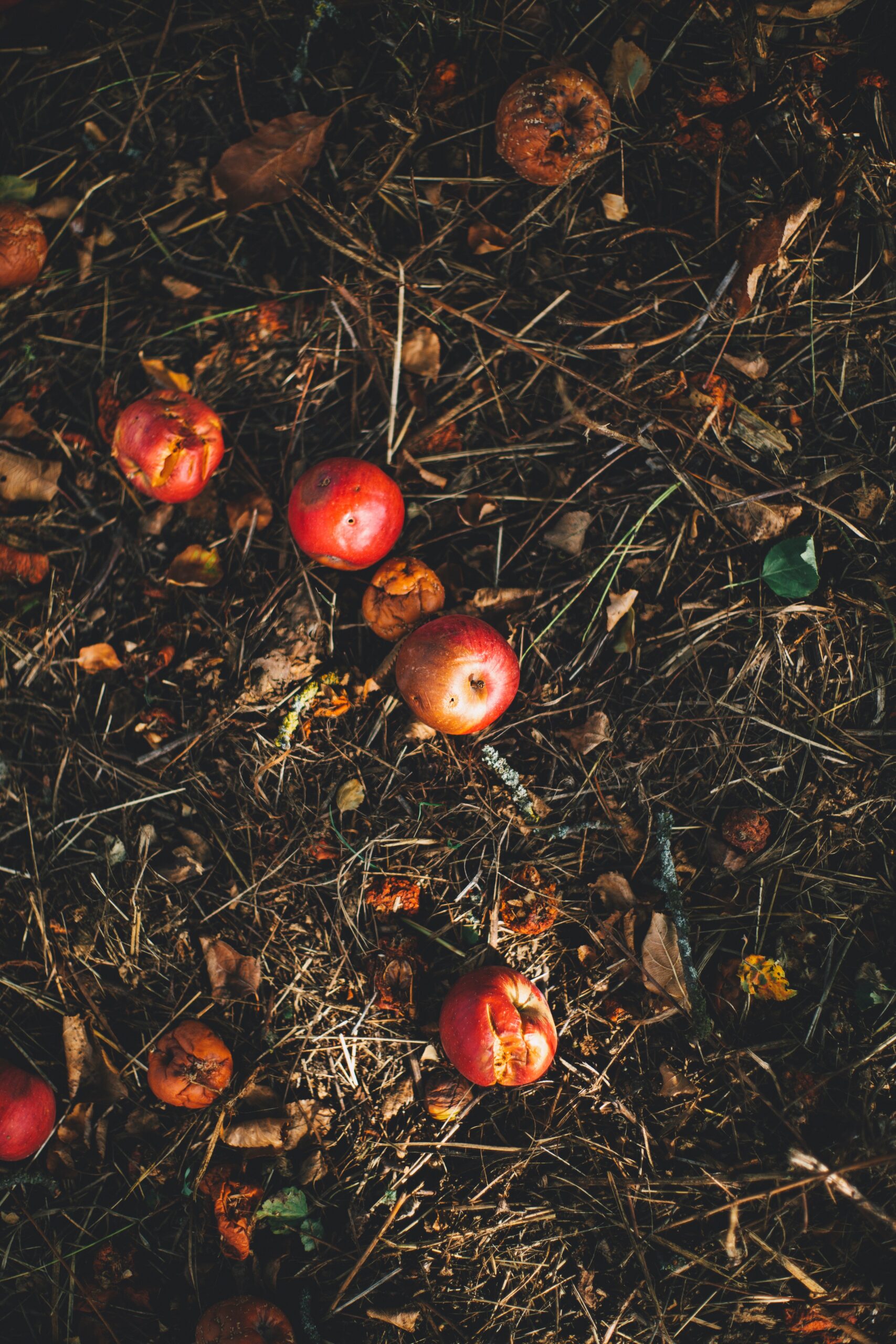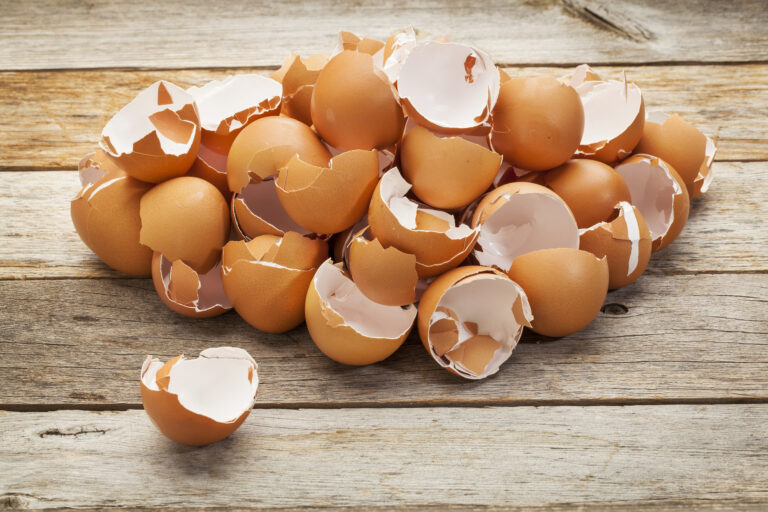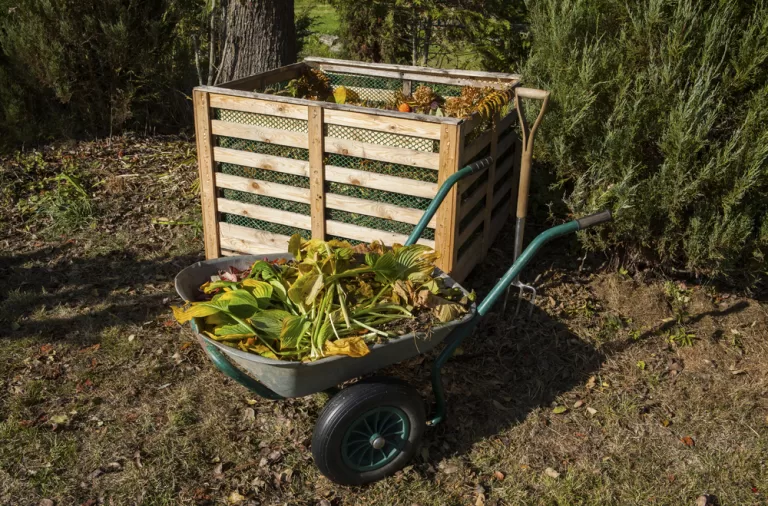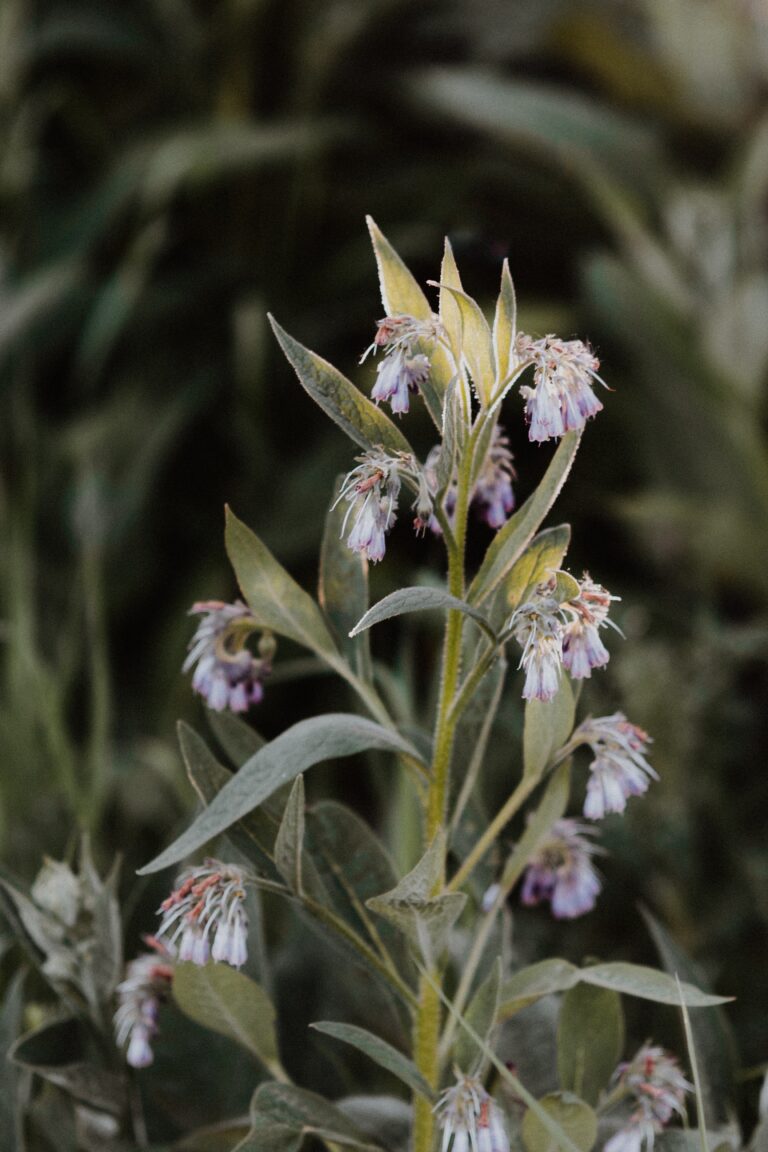What is the Difference Between Compost and Fertilizer? Spoiler Alert: Your Plants Can Tell!
Before I started gardening, I thought compost was another word for fertilizer. However, I’ve since learned that compost and fertilizer both nourish the garden in different ways.
Compost, they say, is the black gold of the garden, an organic concoction that’s the result of a backyard alchemy where kitchen scraps and yard waste transform into nutrient-rich goodness. On the other hand, fertilizers are like the garden’s fast-food—quick, convenient, packed with nutrients, and available for the plants’ immediate consumption.
Compost is a bit like a home-cooked meal for plants. It’s crafted with patience, often made from the autumn leaves that were once a chore to rake, and food peels that were nearly tossed thoughtlessly into the trash. It’s teeming with microbial life, slowly releasing its wealth of nutrients to feed both the soil and the plants. Meanwhile, fertilizers have a more direct approach. They zoom straight to the plant roots with their nutrient-packed formulas, whether they’re synthetically made or derived from natural sources, ensuring the green babies don’t go hungry.
Understanding the differences between compost and fertilizer is essential for any green thumb aiming to champion the health of their garden without overstuffing their leafy friends with too many nutrients or, heaven forbid, the wrong kind. It’s a delicate balance, a dance of decay and nourishment, where one misstep could turn your zucchinis into either the star of the dinner plate or an oversized paperweight.
Defining the Dynamic Duo
In the veggie crime-fighting world, compost is the silent hero in the garden, while fertilizer is like the flashy sidekick that delivers a punch of nutrients.
What is Compost?
Compost, they say, is like a gourmet meal for plants, crafted from the remains of last night’s dinner… or last month’s lawn clippings. It’s a smorgasbord of organic matter that breaks down over time, thanks to the tireless work of microorganisms. This mixture is the epitome of recycling: leftovers feeding our leafy friends.
- Ingredients: Kitchen scraps, yard waste, and paper
- Process: Microbial decomposition
- Benefits: Improves soil structure, water retention, and provides nutrients
The Essence of Fertilizer
Fertilizer, on the other hand, could be likened to a nutrient espresso shot straight to the roots. It’s a mix of mineral or synthetic ingredients tailored to meet the specific dietary needs of plants. Fertilizer doesn’t beat around the bush – it delivers:
- NPK Ratio: Nitrogen (N), Phosphorus (P), and Potassium (K) as the main ingredients
- Types: Chemical, organic, slow-release, and water-soluble
- Use: Provides an immediate boost of nutrients to support growth
The Composition Chronicles
Delving into the dirt, one finds that compost and fertilizer are not just garden variety soil enhancements. They’re the superheroes of plant nutrition, each with their own origin story and special powers.
Inside the World of Compost
Compost is nature’s own recycling program. Microorganisms, fungi, and little critters like worms work tirelessly in your compost pile to breakdown organic matter, such as leaves, vegetable peels, and coffee grounds. Once these heroes have finished their feast, what remains is compost: a dark, crumbly, and earthy-smelling substance.
- Key Ingredients: Organic matter (green materials for nitrogen, brown materials for carbon)
- Superpower: Improving soil structure, water retention, and encouraging beneficial soil microbes
Fertilizer’s Fabulous Features
On the other side of the garden, fertilizers strut their stuff. They’re concoctions of minerals and chemicals providing targeted nutrition to plants. Fertilizer labels boast a series of three numbers, not a secret code, but a revealing insight into their nutrient profile. The numbers represent the percentages of nitrogen (N), phosphorus (P), and potassium (K), each a nutrient titan in the fertilizer league.
- Key Nutrients: N-P-K (Nitrogen, Phosphorus, Potassium)
- Superpower: Giving plants a direct and immediate boost in growth and health
The Nutrient Narrative
In the world of plant nutrition, compost serves as a smorgasbord of sustenance while fertilizer acts like a specialized nutrient shake, both offering unique dining experiences for your garden. This blog post on The Spruce website offers more insight: https://www.thespruce.com/compost-vs-fertilizer-5216779
The Buffet of Benefits from Compost
Compost, the gardener’s gold, is the end product of decomposed organic matter. It’s like a buffet filled with a diverse spread of nutrients, providing a balanced diet to plants.
- Key Components: Compost is teeming with macronutrients such as nitrogen, phosphorus, and potassium, and micronutrients like zinc and iron.
- Soil Health: It’s a marvel for the soil, punching up the microbial activity and improving soil structure, which helps with water retention and aeration.
If you want a guide to getting started with composting, here’s my process: https://allnaturalgarden.com/using-greens-and-browns-in-your-compost/
Fertilizer’s Feast of Nutrients
Fertilizer, on the other hand, is the fast-food chain of the plant world, supplying targeted nutrition in a concentrated form. This means plants can gobble up those nutrients quickly and efficiently, leading to rapid growth.
- Synthetic vs. Organic: Fertilizers come in two main types: synthetic and organic. Synthetics are like ordering takeout—they’re ready to use, providing immediate nutrient gratification. Organics are more like slow-cooked meals, releasing nutrients over time.
- N-P-K Ratio: They’re famous for their N-P-K ratio (nitrogen-phosphorus-potassium), which allows gardeners to choose specific formulations for the needs of their beloved plants.
So, whether your garden is craving a leisurely buffet or a speedy nutrient smoothie, you’ve got the menu to satisfy its hunger.
The Dirty Deeds
When one talks dirt, they can’t help but chuckle at the poetic justice of what’s considered ‘waste’ becoming the life force for the new. In the marvelous world of gardening, two heavyweights reign supreme: compost, the patient nurturer of the earth, and fertilizer, the rapid enhancer of growth.
How Compost Contributes to Soil Majesty
Compost is the unseen hero of the plant kingdom. It’s fashioned through the decomposition of organic matter, which includes your kitchen scraps and garden waste, becoming a rich humus that imparts soil structure and nutritional benefits to the land. It takes its time, breaking down over months, but it delivers a cornucopia of goodness, like:
- Nutrient-rich Profile: Provides the essential trio of nitrogen, phosphorus, and potassium, along with a gaggle of micronutrients.
- Soil Structure: Acts like a spa treatment for dirt, making it fluffy and aerated.
- Water Retention: Helps soil hold onto moisture like a sponge, which is quite handy during dry spells.
Fertilizer’s Fast-Acting Finesse
While compost likes to take the scenic route, fertilizer dashes to the rescue with its concentrated nutrients. It comes in both synthetic and organic forms, delivering a targeted nutrient hit to plants. Farmers and gardeners turn to it for a quick-fix to boost growth and address nutrient deficiencies. Here’s the rundown:
- Immediate Results: Like a shot of espresso for plants, it kicks growth into high gear.
- Precision Feeding: Whether it’s nitrogen, phosphorus, or potassium, gardeners can pick the precise nutrient cocktail their plants crave.
The garden soil quakes in anticipation as these two powerhouses play their unique roles, ensuring that things stay interesting beneath our boots.
The Ecological Showdown
In this horticultural hullabaloo, compost and fertilizer square off, showcasing their impacts on mother nature’s green carpet.
Compost’s Environmental Cameo
In the left corner of the garden, dressed in decomposed organic matter, compost makes its entrance. This eco-friendly champ, teeming with microorganisms, turns kitchen scraps and yard waste into nutrient-rich gold. Compost helps soil:
- Retain moisture: The soil can cling to water like a sponge, reducing the need for irrigation.
- Improve structure: Soil structure gets a makeover, helping roots breathe and stretch out.
Fertilizer’s Eco-Footprint
Meanwhile, pacing impatiently in the right corner, with N-P-K (nitrogen-phosphorus-potassium) stamped on its container, fertilizer packs a powerful punch of immediate nutrients, but not without cost. Fertilizers have been called out for:
- Chemical runoff: Fertilizer can get carried away — quite literally — polluting watersheds.
- Greenhouse gases: Especially when overused, synthetic fertilizers can burp out nitrous oxide, a greenhouse gas with a warming potential.
Application Acrobatics
When it comes to gardening, the way one introduces compost or fertilizer can feel like a performance art — precision and timing are everything.
Spreading the Goodness of Compost
They say composting is the soil’s equivalent of a slow food movement. Compost should be applied to gardens and fields usually once or twice a year, often in spring or fall. The ideal is about 1/4 to 1/2 inch spread on garden beds. For grassy areas, a thin layer is best, ensuring it’s applied evenly so as not to clump, which can suffocate the lawn. One can think of it as a top-dressing performance where the lawn is the stage, and everyone’s watching.
Fertilizer’s Dosage and Delivery
Conversely, fertilizers come with a more directed script of dosage and frequency, often guided by the nutritional needs of plants and the season. One should read those labels like nutrition facts on a diet plan. For liquid fertilizers, don’t let the plants go thirsty – dilute as directed and apply directly to the base. Granular types play a different tune with a more broadcast approach or a localized ‘drop’ method for precision. Think of fertilizers as a boost of energy drink; it’s all about getting the amount and timing right to avoid the jitters (or plant burn).
The Time Factor
In the garden party of soil enrichment, compost and fertilizer show up on very different schedules.
Compost’s Slow Jam
Compost is like that friend who arrives fashionably late to the party but ends up being the life of it. It’s a slow-release agent, providing long-term nutritional benefits to soil. Microorganisms break down organic material over months, allowing compost to gradually mingle with soil and release nutrients like nitrogen, phosphorous, and potassium. This is a marathon, not a sprint, folks.
Fertilizer’s Quick Fix
Meanwhile, fertilizer’s like the guest who bursts in, makes a loud entrance, and gets straight down to business. It offers a targeted nutrient boost with immediate effects. Think of it as an energy drink for plants, providing them with ready-to-party nutrients quickly. However, this frenzy of feeding is short-lived, and frequent applications may be needed to keep the garden gala going.
Financial Fables
In the world of garden economics, compost and fertilizer hold their value differently. While one might think brown gold refers to coffee, in the compost realm, it signifies profits sprouting from the soil.
Investing in Compost Economy
Cost Efficiency: Investors often chuckle at compost’s affordability factor, since it’s literally made from waste—nature’s own recycling program. Here’s the noteworthy part: A single household’s organic refuse can transform into a nutrient-rich pile with zero investment besides time and a bin. Interestingly, home composting has become the gardener’s penny stock, with returns in abundant, healthy plants rather than cold hard cash.
Market Demand: Moreover, environmentally conscious consumers are putting their green thumbs where their mouths are, making the compost market as hot as a well-maintained compost pile. They appreciate that investing in compost can mean supporting a sustainable system that reduces waste and improves soil health, not just plant growth.
The Price Tag on Fertilizer
Material Cost: The soil supplement story wouldn’t be complete without the price of admission for fertilizers. Synthetic fertilizers come at a cost, not only to the purchaser’s wallet but also in their production, which involves expenses both monetary and ecological. A table that compares average costs per pound might look like this:
| Fertilizer Type | Average Cost per Pound |
|---|---|
| Synthetic | $0.50 to $2 |
| Organic | $1 to $4 |
While the price range for organic fertilizers is wider, the heftier tag mirrors its premium for being eco-friendlier and often more nutrient-diverse.
Economic Impact: The economic joke here is that agriculture’s heavy reliance on synthetic fertilizers can lead to unintended expenses down the road, like soil degradation and water treatment. Consumers may not see these costs upfront, but like an unfunny punchline, they can come back to bite in the form of environmental remediation and sustainability efforts. This creates a long-term financial narrative which, unlike a flash in the pan get-rich-quick scheme, requires thinking about stability and the earth’s future yields.
Making the Choice
When it comes to giving plants their much-needed nutrients, gardeners often stand at a fork in the (garden) path: should they go the compost route or reach for a bag of fertilizer?
Compost’s Calling
Compost, often adored as black gold in the gardening world, is a master at improving soil structure. One can almost hear the earthworms cheering as compost integrates into their subterranean abodes, enhancing soil aeration and water retention. Here’s why compost might just be your garden’s new best friend:
- Soil Structure Savior: Enhances soil porosity and density.
- Slow and Steady Nutrient Release: Provides a gradual supply of nutrients over time.
- Microbial Fiesta: Encourages a diverse, healthy soil ecosystem.
Fertilizer’s Forte
Fertilizers, on the other hand, are like the fast-food joints of plant nutrition—quick, convenient, and packed with a punch of essential nutrients. They come with N-P-K ratios (Nitrogen-Phosphorus-Potassium) that are like secret codes signaling to the plants exactly what they’re about to feast on. If plants had tailgates, fertilizers would be at every pre-photosynthesis party. Behold the prime reasons fertilizers might be the go-to for your green pals:
- Targeted Nutrition: Supplies specific nutrients tailored to plant needs.
- Immediate Impact: Offers quick nutrient access, which is great for correcting deficiencies.
- Versatility King: Available in various forms (granular, liquid, spikes) for different application methods.







